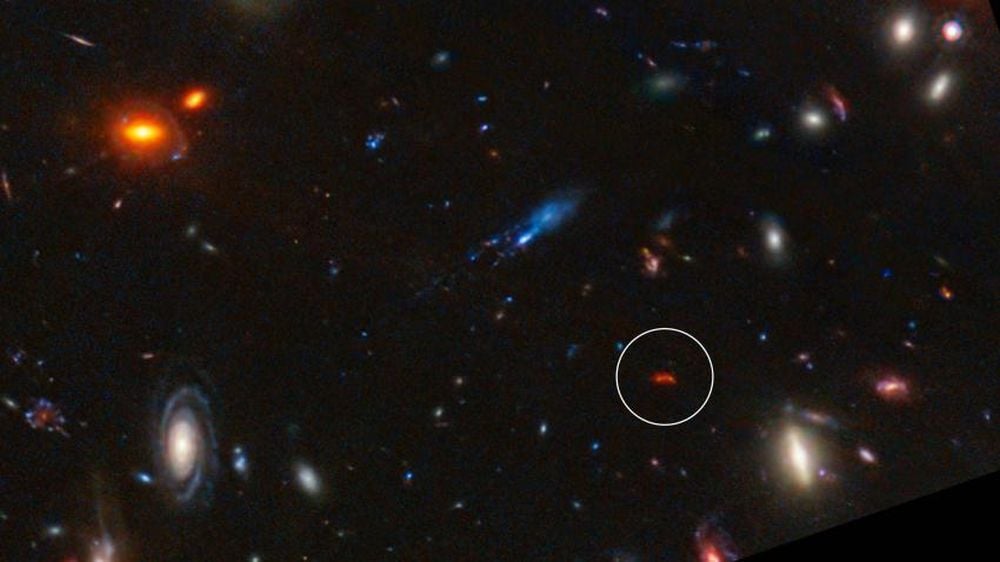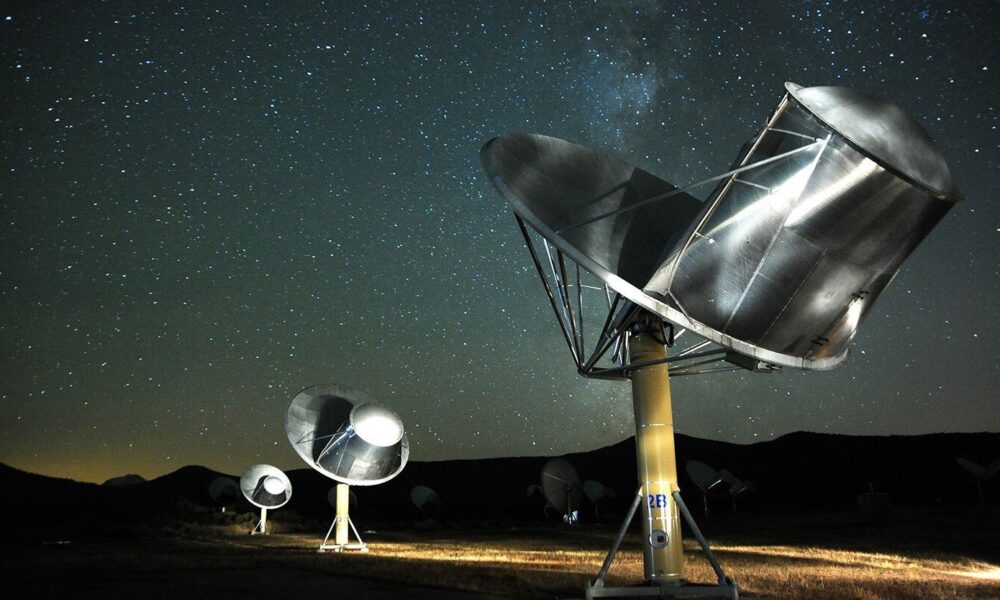The findings from the James Webb Space Telescope (JWST) are reshaping our understanding of the early Universe. Just weeks into its observations, the JWST detected galaxies that are far more massive than previously theorized. This revelation has prompted researchers to seek explanations, leading to significant insights from the Atacama Large Millimetre/submillimetre Array (ALMA).
In a study titled “A warm ultraluminous infrared galaxy just 600 million years after the Big Bang,” published in the Monthly Notices of the Royal Astronomical Society, lead author Tom Bakx, a postdoctoral researcher at Chalmers University of Technology in Sweden, focuses on a galaxy designated as Y1. This galaxy, located at a redshift of 8.3, provides a glimpse into the Universe just 600 million years after the Big Bang, with light that has traveled over 13 billion years to reach us.
The research highlights Y1’s extraordinary star formation rate (SFR), which is approximately 180 times greater than that of our own Milky Way. While the Milky Way forms about 1 solar mass per year, Y1 is forming around 180 solar masses annually. This elevated rate offers a compelling explanation for the unexpectedly large sizes of early galaxies observed by the JWST.
Exceptional Characteristics of Galaxy Y1
The discovery relies heavily on the properties of light. Y1 emits red light from superheated dust, which obscures its high SFR. Bakx noted, “We’re looking back to a time when the universe was making stars much faster than today.” The presence of dust in this galaxy allowed researchers to detect light from it, marking Y1 as the most distant source of glowing dust yet observed.
To further investigate Y1, the team measured its temperature using ALMA’s capabilities to observe light at a wavelength of 0.44 mm. Bakx explained, “At wavelengths like this, the galaxy is lit up by billowing clouds of glowing dust grains.” The brightness of Y1 in these wavelengths confirmed it as an exceptional finding in the field of astronomy.
The dust temperature of Y1 is approximately 90 Kelvin, or -180 degrees Celsius (-292 degrees Fahrenheit), notably higher than that of the Milky Way, which ranges from 20 to 40 Kelvin. This temperature difference reflects the galaxies’ contrasting SFRs, with Y1’s higher temperature indicating its rapid star formation.
Co-researcher Yoichi Tamura, an astronomer at Nagoya University in Japan, emphasized the significance of Y1, stating, “This confirmed that it really is an extreme star factory. Even though it’s the first time we’ve seen a galaxy like this, we think that there could be many more out there.”
Implications for Understanding Early Galaxies
The rapid bursts of star formation observed in Y1 may explain why the JWST has identified massive galaxies so early in cosmic history. Researchers are keen to explore this phenomenon further. Bakx expressed the intention to seek more examples of similar star factories in future studies, utilizing ALMA’s high-resolution capabilities to gain deeper insights into these galaxies.
This research also raises questions about the amount of dust found in early galaxies. Traditionally, astronomers have understood that older stars predominantly produce galactic dust, particularly evolved red giant stars. However, the findings suggest that early galaxies like Y1 may possess more dust than expected, despite having fewer older stars.
Co-author Laura Sommovigo, affiliated with the Flatiron Institute and Columbia University, remarked, “Galaxies in the early universe seem to be too young for the amount of dust they contain.” She explained that a small amount of warm dust can emit as much light as larger quantities of cooler dust. This observation aligns with what researchers are witnessing in Y1, which, despite its youth, displays both hot and bright dust.
The authors conclude that Y1 represents an extreme case of dust-obscured star formation, significantly contributing to the cosmic build-up of stellar mass. As astronomers continue to delve into the early Universe, findings like those from Y1 may redefine our understanding of galaxy formation and evolution.







